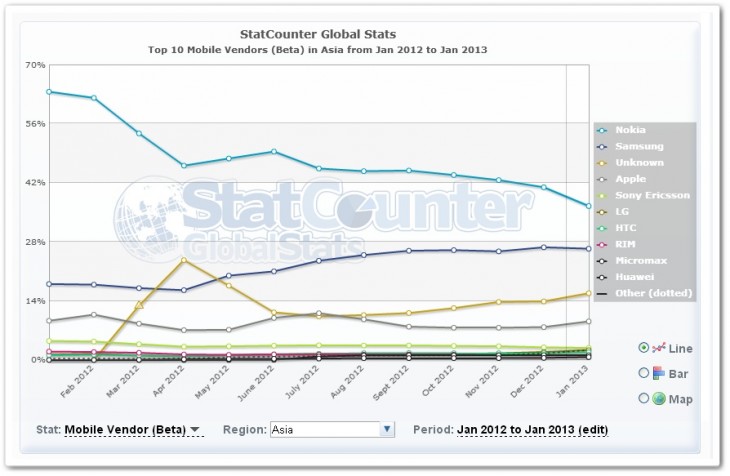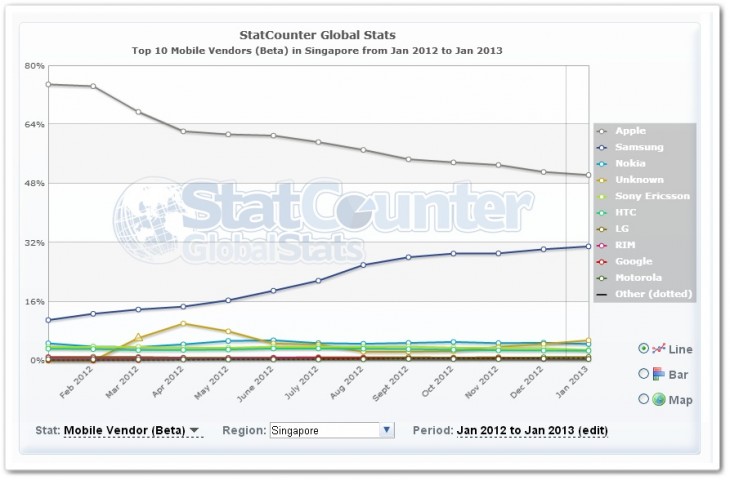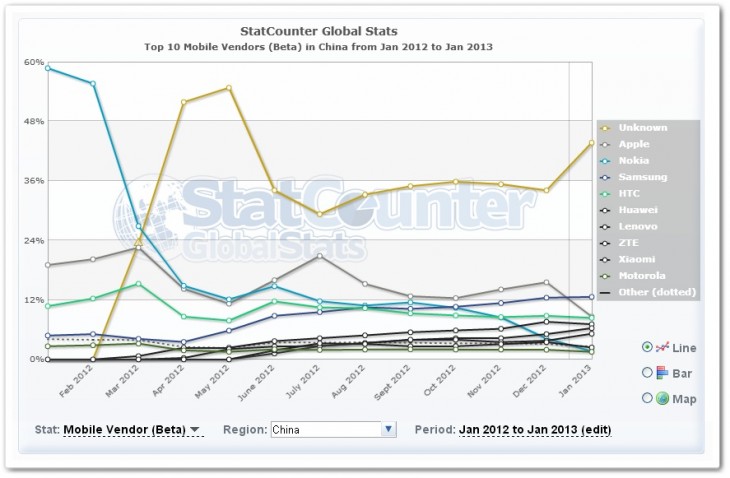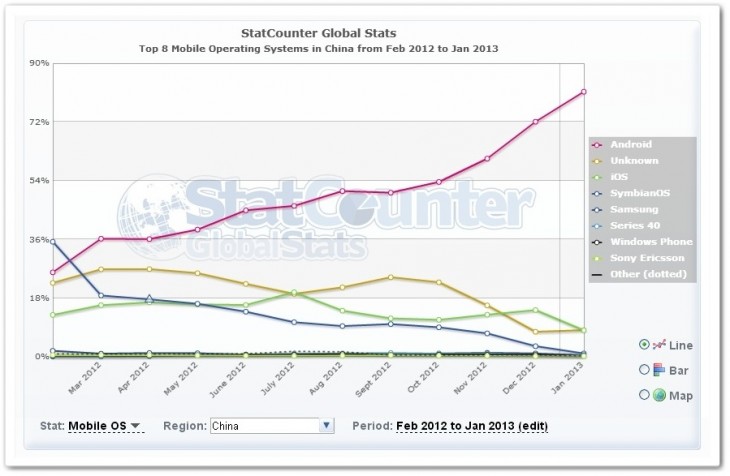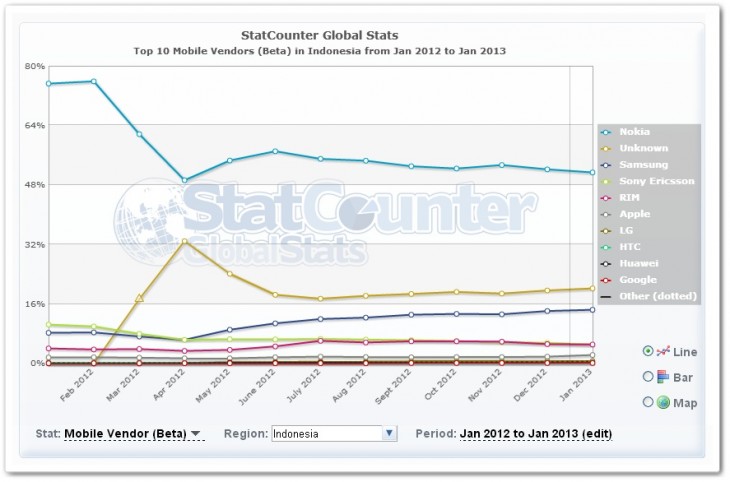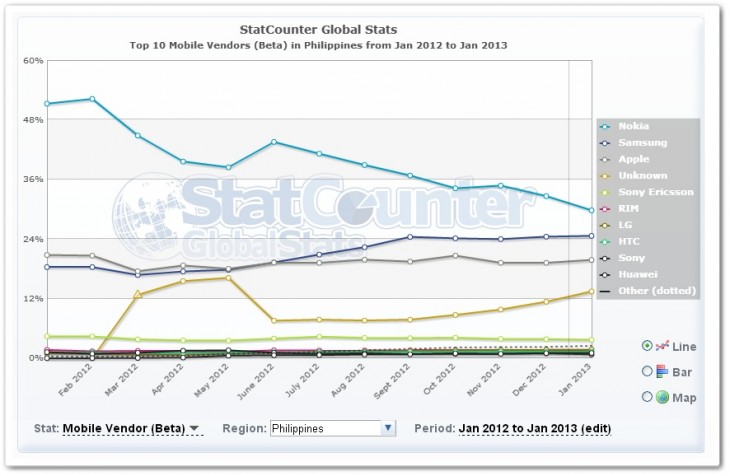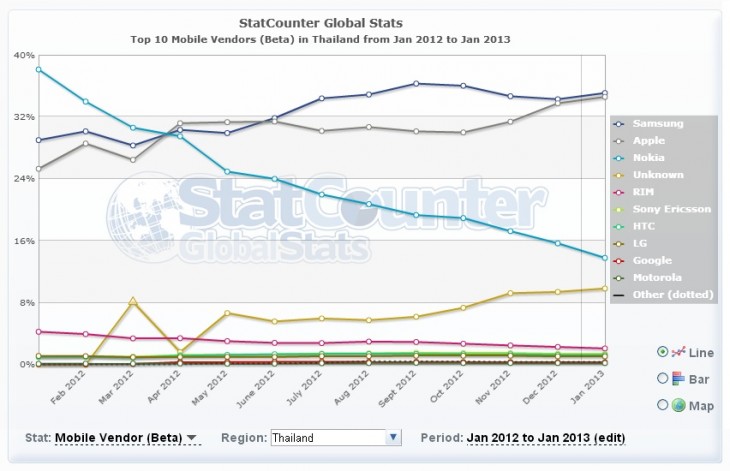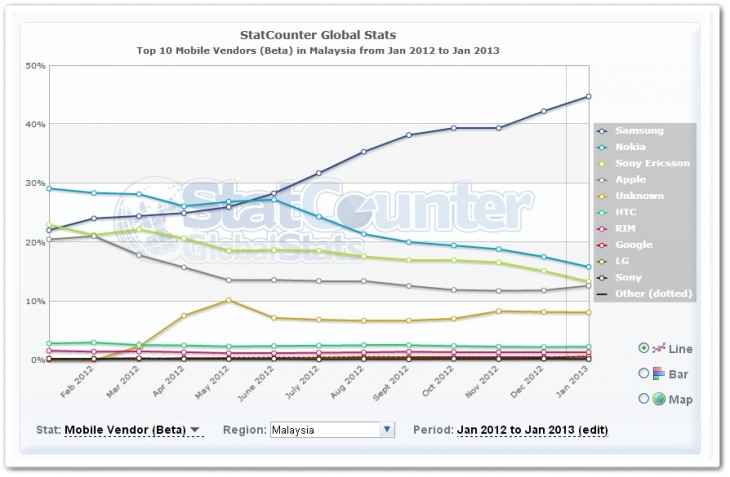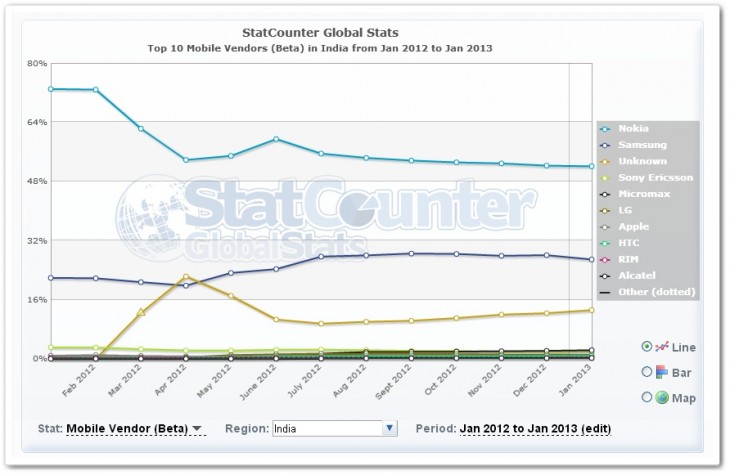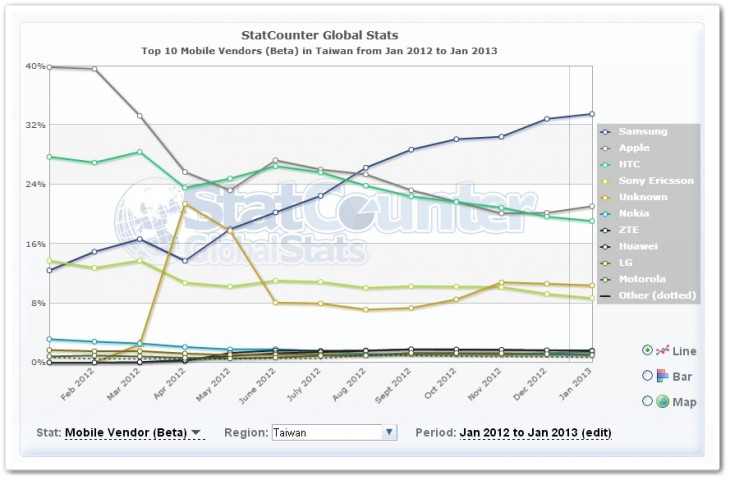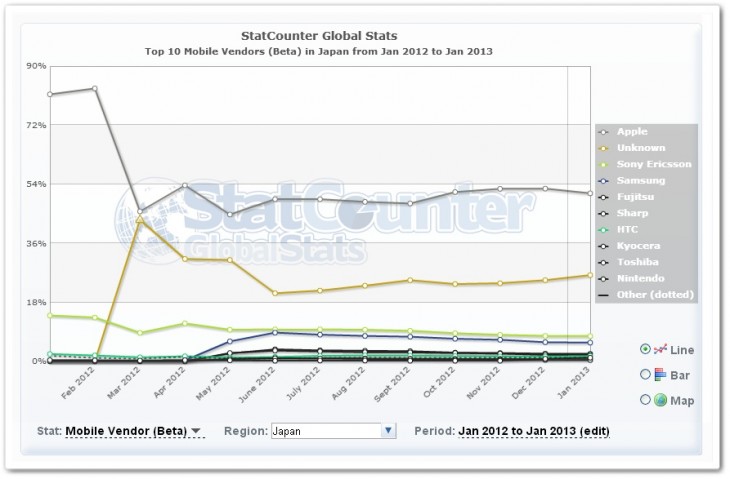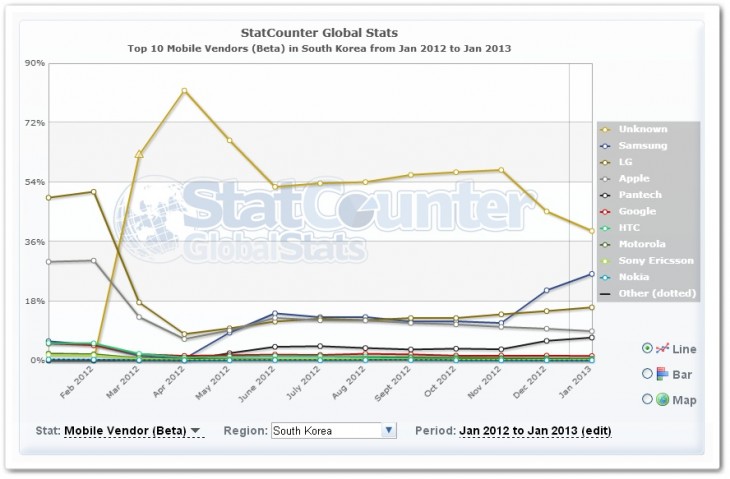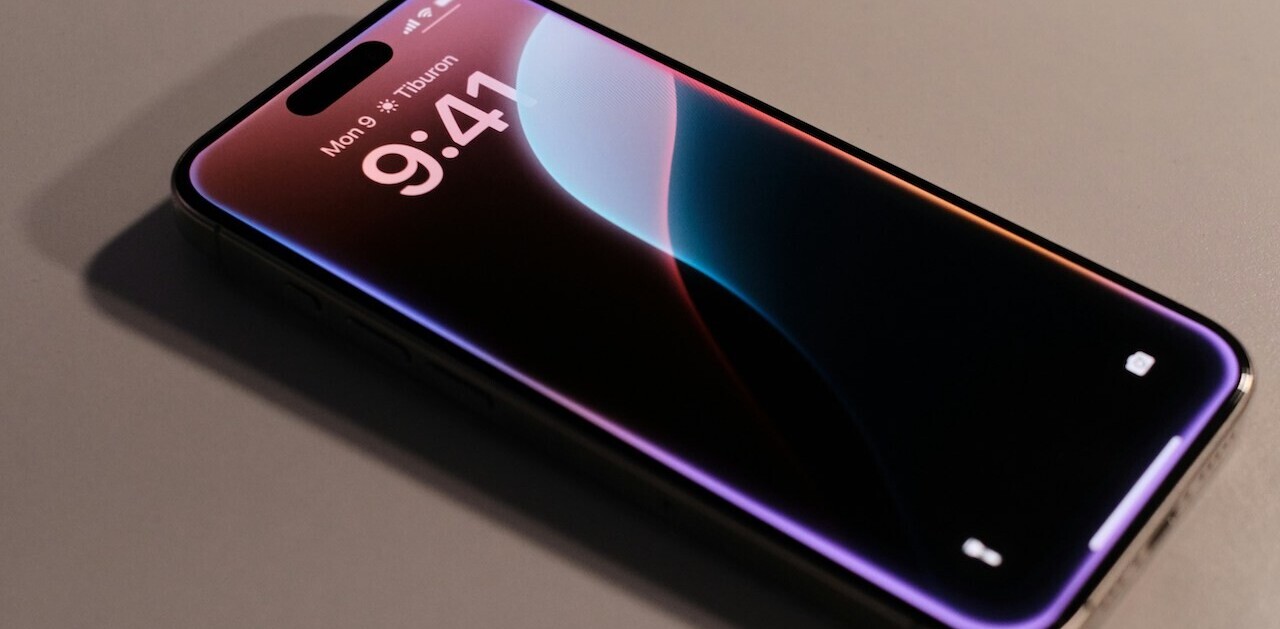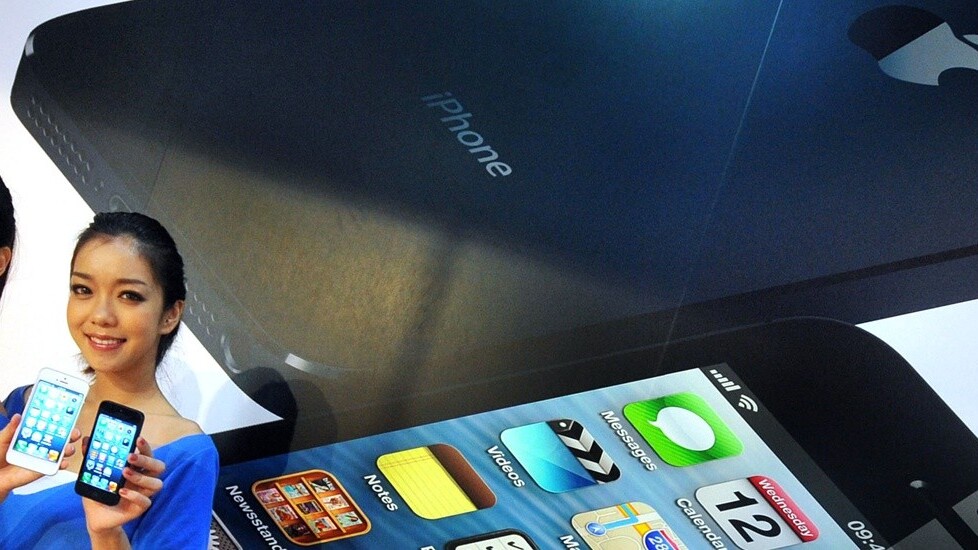
Reuters published an interesting feature last week which suggests that Apple’s iPhone is “losing some of its luster” in Asia’s top cities. The news agency focuses on Singapore and Hong Kong in particular, concluding that the growth in popularity of Samsung devices is cutting into Apple’s success as people buy devices from the Korean firm rather than Apple’s iPhone range.
The article suggests that the trend is being mirrored in growing markets like Thailand and Indonesia. The sentiments of the Reuters report were picked up by other media which go so far as to suggest that “Apple is having some trouble in Asia”.
One aspect of that takeaway is true, but the other is most definitely not. Yes, Android (and Samsung, as its biggest handset partner) is gaining ground in Asia, but, no, Apple does not need to worry that the iPhone is losing popularity in the region.
Reuters cites data from StatCounter — a measurement firm that assess 15 billion global page views per month to its network of more than three million websites — which shows that iOS has plummeted in Singapore and Hong Kong. In Singapore, its market share fell from 72 percent of browser usage in January 2012 to 50 percent in December, while Android rose from 20 percent to 43 percent during that same period. In Hong Kong, it fell from 45 percent to 30 percent, while Android grew to account for more than 75 percent of traffic.
Outside of these two city-states, the story is different. Android has been growing at a rapid pace in Asia for some time thanks to its sheer range of devices that appeal to multiple price points, it charted 1,000 percent shipment growth in November 2011, for example. The iPhone does not have that kind of scale and, with many countries lacking the carrier subsidization deals that make high-end smartphones affordable in western markets, it has remained an expensive product while the Google-owned platform has gained pace as an affordable one.
Despite that growth, Apple is most definitely not falling across Asia. With Android putting it under immense pressure, it is largely holding its ground among high-end smartphone owners.
Rather than peruse StatCounter’s mobile operating system data — which groups Samsung and all other Android partners under one data point, for comparison with iOS — we looked at its mobile vendor metrics, which break out each phone maker’s devices. The only point to bear in mind here is that, in some emerging markets, Samsung has a strong feature phone which adds extra numbers beyond its smartphone presence. Overall though, this gives a more accurate picture of Samsung’s growth and Apple position.
Asia-wide
For Asia, however, here are both charts. Across the continent as a whole, the growth of Android is clear to see, while iOS has maintained a steady trajectory. Rather than take a bite out of Apple, Android’s rise has coincided with the demise of Symbian, and it is likely that Android has also pinched customers from BlackBerry and other spiraling devices too.
The vendor-based chart shows Apple holding a consistent position, while Samsung has increased share. Nokia is the big faller here, which further suggests that many of its customer moved on to new platforms, with Android (and Samsung) the most likely destination for many.
Country-by-country
Hong Kong
The charts show iOS lost significant market share coming into 2012, however it stabilized from April. Samsung’s line rises noticeably around the launch of the Galaxy S III (June/July) but it, like Apple, largely plateaued at the end of the year.
While Samsung closed the gap in 2012, the difference in market share between the two is little more than 5 percent in January 2013, according to StatCounter. That’s quite a different interpretation than the Android vs iOS data which Reuters cites.
Singapore
iOS remains ahead of Samsung but the Korean firm saw its share rise impressively in 2012 as Apple saw its lead cut. It still maintains a 50 percent plus majority and a lead of more than 15 percent, as the chart shows. That is, again, a very different scenario to the takeaway from a comparison of Android and iOS in Singapore.
China
Android continues to dominate in China, as is well documented, although local brands dominate the space. Apple remains in the mix in the country — which is now its second largest market — but it is principally competing at a different price point to the rest of the market and is therefore a minority player, despite it recently offering new credit options to help consumers afford an iPhone 5.
It is interesting to note that, while ‘unknown’ accounts for a majority share in China, this most likely refers to local Android builds since StatCounter’s mobile operator data set identifies the Google platform as leading the market by some distance. Local feature phones may also be included among the ‘unknown’ data above.
Indonesia
Feature phones account for the majority of devices in Indonesia, and that is demonstrated by the fact that Nokia leads the pack, with ‘unknown’ devices ranking second. Apple remains a niche, while Samsung is growing but still at less than 15 percent market share. Given the nascence of smartphones in Indonesia, Samsung’s feature phone range should also be factored into its market share.
RIM, now BlackBerry, is interestingly not as high as might be expected given that Indonesia has been a key market for the struggling Canadian firm.
Philippines
Another Symbian-owned dominated market, but both Samsung and Apple hold promising positions. The iPhone has held on to a consistent market share while, Samsung grew to reach 25 percent over the course of 2012.
Thailand
Nokia looks to have been the biggest casualty of Thailand’s growing smartphone ownership numbers. Both Apple and Samsung grew past 33 percent market share in 2012, but Samsung’s tally may also include feature phone devices. RIM, once the dominant force, now accounts for a mere few percent, according to StatCounter.
Malaysia
Samsung has been on a tear in Malaysia, where Apple lost ground in 2012. The two started off the year with near identical market share, but Samsung is closing in on 50 percent, while Apple has fallen from 20 percent to just shy of 15 percent. That’s not a huge drop, and most of Samsung’s new recruits appear to have come from Nokia, and Sony Ericsson too.
India
Apple continues to be a niche player in India where feature phones are dominant. Though Nokia lost ground, its devices — predominantly feature phones — account for 50 percent market share. Samsung, which is likely to likewise have a sizable feature phone presence, grew by less than 5 percent over the course of 2012.
Taiwan
Taiwan is the market where Apple appears to have seen the most dramatic drop in market share, seemingly to the benefit of Samsung. Apple held 40 percent market share at the beginning of 2012, but that fell to just over 20 percent 12 months later. Taiwan’s own HTC also suffered a sizable drop, of almost 10 percent, having begun the year on around 27 percent.
Samsung now accounts for one-third of the market, according to the chart, after growing consistently from around the time of the Samsung S III launch.
Japan
Apple lost some ground in Japan in early 2012 off the back of the iPhone 4S launch, but it remains a long way ahead of Samsung. Its nearest rival is ‘unknown’, which consists of the large number of Web-enabled feature phones that have long been popular in the country. Apple accounts for more than 50 percent of the market, but that was as high as 85 percent following the iPhone 4S launch, according to StatCounter.
South Korea
Like Japan, Korea was once dominated by Web-enabled clamshells and other feature phones as the sizable line for ‘unknown’ shows. However the country’s smartphone revolution is well underway and local giant Samsung leads the pack, unsurprisingly.
Apple began the year with a third of the market, following the iPhone 4S launch, but 2012 saw it drop back under 18 percent and fall below LG, another Korean phone maker. Korea has never been a traditionally strong market for Apple but, with HTC and Motorola withdrawing from the country, the US firm is performing better than the other non-Korean companies there.
The charts show that Samsung is among the fastest growing phone makers in most markets in Asia, but Apple is not losing ground in most countries across the region. In most markets, its share of traffic recorded by StatCounter has remained consistent — peaking around specific device launches — but it’s also important to note that Apple has never been any other than a niche product that is bought by the more affluent population segments in growing markets like Indonesia, India, Philippines and others.
While the stats don’t allow for definite conclusions — since they don’t break out data by devices — anecdotal evidence across these markets suggest that Android’s growth is spurred by low- and mid-range devices, many of which are Samsung’s smartphones.
In Thailand, for example, where carriers don’t subsidize phones, devices are sold at off-contract cost. An iPhone 5 will cost upwards of $770 (22,900 baht), while a Samsung S III retails at around $735 (21,900 baht). That’s a lot of money and beyond the financial reach of the average consumer.
In that respect, the growth of Android is proof of the potential of a lower priced iPhone, but this really isn’t news as we said back in October 2011. What is new is that Android appears to be the choice for ‘new’ smartphone owners; those who are moving from feature phones, or perhaps young people who are getting their first sophisticated device. The flexibility and choice of devices and price points, is likely to be particularly appealing to this segment.
In Singapore and Hong Kong, and also Taiwan, where there is greater device subsidization and Apple had previously dominated proceedings — Singapore had the highest rate of iOS devices per population back in 2010 — things are little different. Apple looks to have lost some ground, although the data cited by Reuters paints a rather more negative picture.
Even if Apple is dropping ground in Singapore and Hong Kong, the fact remains that the iPhone is as popular and well owned as ever across the rest of Asia. These two small countries, while strategic for many companies, are minor in terms of market size; Singapore has just over 5 million residents, while Hong Kong has 7 million. Yet Apple is still strong in Southeast Asia — where smartphone ownership is rapidly growing and the cumulative popular numbers some 600 million — while in China it recently saw revenue jump 67 percent year-on-year and it posted record sales figures, despite Android’s dominance. It has not lost ground in Japan or Korea, either, though it remains a minority in the latter.
All in all, that doesn’t sound like failure or the beginning of a demise.
Based what TNW has seen ourselves and heard via others across Asia, the appetite for Apple products is showing no signs of waning. That’s particularly true of the iPad but also valid for the iPhone, and in Southeast Asia in particular, Apple remains the most aspirational phone brand for consumers.
However, the Reuters report does again show the potential for a more affordable iPhone. Android and Samsung is busy attracting the mid- and low-end end consumer; currently that is a segment outside of Apple’s niche, unless it offers something at a lower price.
Headline image via AFP/Getty Images
Get the TNW newsletter
Get the most important tech news in your inbox each week.

